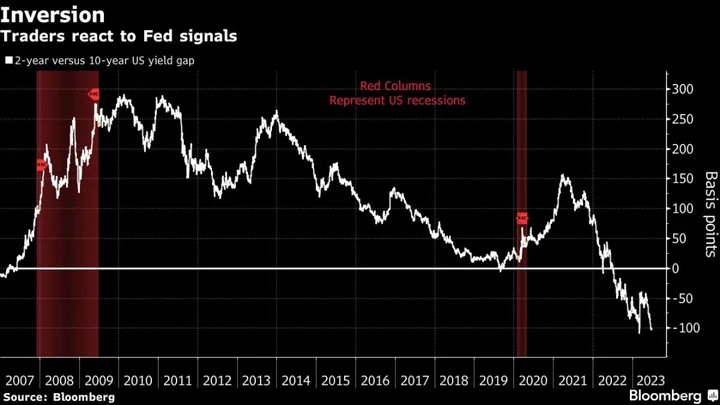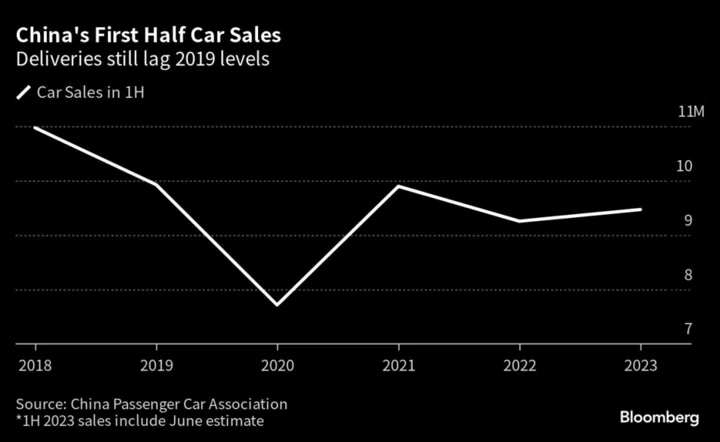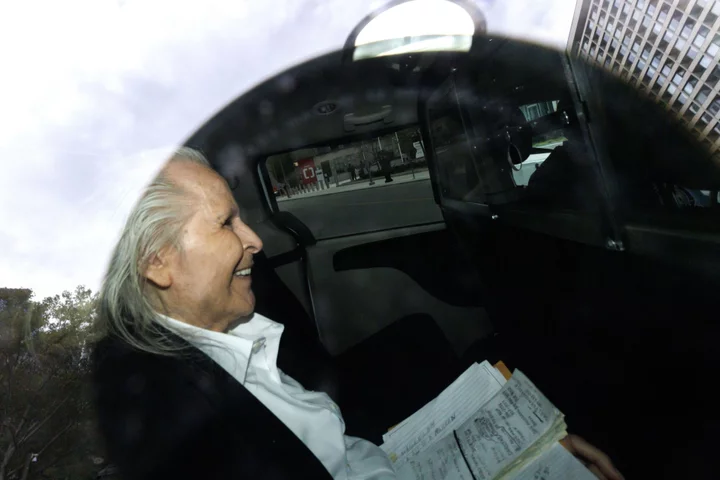In a turnaround that’s already taken it from one of the world’s biggest gold buyers to a top seller this year, Kazakhstan’s central bank is looking to cut the metal’s share to as low as half of its $34.5 billion reserves.
Alongside its counterparts in Turkey and Uzbekistan, the National Bank of Kazakhstan has emerged among the institutions that have contributed to a second straight quarter of decline in bullion purchases from central banks, whose buying accounted for nearly a quarter of global gold demand last year.
The Kazakh sales abroad of about 67 tons in the first six months are part of a plan to lower the metal’s share in reserves to an “optimal” level of 50%-55% — equivalent to around 300 tons — at end-2023, from the current 314 tons. The proportion was near 56% at the end of June, the central bank said in an emailed reply to questions.
“Gradual” gold sales on external markets last year reached about 120 tons, fetching around $7 billion, “in order to diversify and ensure balance in the allocation” of reserves, the central bank said.
The shift away from bullion is allowing it to “replenish the foreign-currency part of the reserves, which is invested in highly liquid instruments in external markets.” Additionally, it still holds the metal “in foreign accounts in an unallocated form and by placing it in interest-bearing gold deposits.”
Policymakers in Central Asia’s biggest energy producer are turning the page on a period that saw them bring the share of the precious metal in reserves near 70% last year from about 10% in 2011, when the government gave the central bank a “priority” right to lock up domestic supplies of refined gold.
‘Liquidity, Profitability’
Authorities determine the appropriate proportion of bullion by “taking into account the requirements of liquidity, profitability and a moderate level of risk,” the central bank said.
“The gold market continues to demonstrate high sensitivity to the monetary policy of the US Federal Reserve,” the central bank told Bloomberg. “In the absence of additional external shocks, the potential easing of the Fed’s monetary policy may support gold prices.”
Apart from divestments abroad, the central bank in the first half also sold 0.7 tons of gold bars in the domestic market, a slight increase from the same period a year earlier.
Kazakhstan is setting out an approach that makes it an outlier among central banks, most of whom expect an increase in the proportion of total reserves held in gold over the next five years, according to a survey published in May by the World Gold Council.
Excluding gold sales by Turkey — which moved to limit imports of the precious metal this year after they became a drag on external finances — central banks globally were net buyers between March and May, the WGC, a lobby group for the mining industry, said in a July report.
Seen as a haven for investors during risky times or as a hedge against inflation, gold prices have held up, rallying amid signs the US monetary tightening cycle was nearing an end. Higher rates are typically negative for non-interest bearing gold.
The Kazakh central bank was opportunistic in the timing of its gold sales this year, most of which it said took place at the end of the first quarter and the beginning of the subsequent three months — when prices were “at their historical highs.”
In early May, gold approached its record high of $2,075.47 an ounce, set in 2020.
Besides the country’s international reserves, the Kazakh central bank also manages assets in the $60 billion National Oil Fund, where about 40 tons of gold make up 4.9% of the portfolio. Given the 5% allocation limit for bullion, there’s no plan to raise its share.
Further gold sales abroad in the second half of the year are planned from unallocated accounts and by using options strategies, depending on market conditions, the central bank said.
The eventual proportion of the metal in reserves at end-2023 will depend on factors ranging from the price of gold to the volume of purchases from domestic producers. “There is no ‘ideal’ ratio of gold and foreign exchange assets,” the central bank said.









